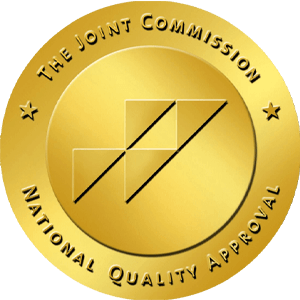In the modern digital age we’ve seen an epidemic spike in dual diagnoses disorders–especially amongst young adults. Record rates of depression, anxiety, suicide, personality disorders, substance abuse, overdoses, increased ADHD and overall malaise. This spike was observed before the current pandemic of Covid, but since then the numbers have grown only more and more. Depression rates have tripled, anxiety rates have hit record levels, and suicides have dramatically increased. Which undoubtedly is connected to the increase and how common dual diagnosis disorder in Austin is today. With such an abundance of things available for people today, there has also come an unfortunate cost. From technology advances, communication devices, to availability of drugs (prescription or not), the ease of convenience has also allowed unhealthy addictions to grow rapidly. Establishing one unhealthy disorder at the very least, may help you or a loved one discover if any more disorders may also be present.
What Is Dual Diagnosis & Co-Occuring Disorder?
Co-occurring, also called dual diagnosis disorder, or comorbidity, means a person has a diagnosis of both a mental health disorder and a substance use disorder. Because one disorder can mask the symptoms of the other, it is often difficult to determine which came first, and make it more difficult to diagnose. Unfortunately, more than 50% of Americans living with a Dual Diagnosis do not get any treatment for either disorder. And it’s no coincidence then that substance use disorders and mental disorders occur together. Although these problems often occur together, this does not mean that one caused the other, even if one appeared first. In fact, it can be hard to figure out which came first. Researchers think that there are three possibilities as to why dual diagnoses occur together. The first is common risk factors that may contribute to both mental disorders and substance use disorders. These factors can include genetics, stress, and trauma. The second possibility is mental disorders that can contribute to drug use and substance use disorders. For example self-medication, where individuals with mental disorders may use drugs or alcohol to try to feel better temporarily. Also, mental disorders may change the brain to make it more likely that an individual will become addicted. And thirdly substance use and addiction can contribute to the development of a mental disorder. Substance use may change the brain in ways that make you more likely to develop a mental disorder. These possibilities can possibly explain why and how common dual diagnosis disorder in Austin is, as well as other cities around the world.
How Common Is Dual Diagnosis Disorder In Austin?
Compared to a couple of decades ago, how common is dual diagnosis disorder in Austin you think? Drastically different and more common is the answer, unfortunately. According to Depression Researcher Dr. Steven Ilardi, “Americans are 10 times more likely to have depressive illness than they were 60 years ago…and a recent study found the rate of depression has more than doubled in just the past decade”. Young people in particular are increasingly depressed, and their identity and ways of thinking are increasingly and adversely shaped and influenced by their social media platforms it seems. These “social validation feedback loops” that are engineered into our lives via social media are having a substantial impact according to studies. So while there is the illusion of connection via social media, research indicates that Millennials are the loneliest generation, with 25% indicating that they don’t have a single friend.
And there is one other key factor as well: For many, the modern age has also vacuumed out a sense of meaning and purpose out of people’s lives. What is even more interesting is that the more Dr. Ilardi looked at the commonalities of mentally healthy societies, the more he was able to tease out certain common variables for powerful insight. Such variables like living in a close-knit community, being more physically active, having a greater sense of purpose in their lives, and not ruminating on the negative were observed. Armed with his findings, he developed a protocol based on these elements called Therapeutic Lifestyle Changes (TLC) and discovered amazing research results when incorporated into the lives of modern Americans. How common dual diagnosis disorder in Austin is almost the same for many large cities in the United States unfortunately. But, thanks to Dr. llardi and other doctors determined to help those suffering, hope for healing and recovery is possible.
Treatment for Dual Diagnosis Disorder In Austin
Whether it is yourself or someone you care about in question, diagnosing is not an easy spot to the plain eye. It may be difficult to diagnose co-occurring conditions or dual diagnosis disorder in Austin because of its complexity. Substance abuse or addiction symptoms can obscure symptoms of mental illness, and mental illness symptoms can be confused with addiction symptoms. In fact, some people who suffer from mental illnesses may fail to treat their drug abuse because they do not believe it is related to their problems. A Dual Diagnosis Disorder Treatment Center in Austin is recommended for people who continue to struggle with mental health and co-occurring substance abuse issues. The signs of dual diagnosis disorder can be observed and include:
- Failure to take care of work and/or responsibilities.
- Failure to maintain useful and open communication.
- Self medicating mental health symptoms with drugs or alcohol.
- Growing financial problems and legal issues.
- Bad emotional episodes or a lack of control over their emotions.
- Uncontrolled use of drugs/substances or alcohol.
Failure to respond to these signs or kinds of behavior commonly seen with a dual diagnosis disorder can even worsen the growing problem. It is essential for you, or a loved one, to seek professional help in establishing if at least one unhealthy disorder is present. This can help to discover just how common dual diagnosis disorder in Austin is for you or a loved one that lives in the area. Omega Recovery, located in Austin, is a unique facility that provides a complete focus on their clients journey of recovery. Utilizing both evidence-based and experimental therapies to treat the whole client seeking treatment for dual diagnosis disorder in particular.
The Best Treatment Center For Dual Diagnosis Disorder In Austin
Why the sudden rise in mental health disorders and the need for a treatment center for Dual Diagnosis? Dr. Kardaras and Dr. Ilardi think that they’ve found the answer: Increased rates of depression and other mental health woes like anxiety and addiction are a byproduct of our modernized, industrialized and urbanized lives. Our love affair with social media and the gadgets and comforts of being a highly technologically evolved society have made us more sedentary, more isolated and put us on a never-ending treadmill of overworking, under-sleeping and hyper-stressing. At Omega Recovery, we understand that many of our clients are indeed undergoing an existential crisis of meaning and purpose and turning to toxic habits and behaviors to fill the emptiness. In these cases, existential exploration and finding a sense of life purpose is critical in the healing process. We have found that combining existential exploration and traditional psychotherapy and evidence based modalities like CBT and DBT can literally be life-saving. Dr. Kardaras has incorporated “Therapeutic Lifestyle Changes” into the clinical protocols of Omega Recovery in Austin. A combination of unplugging from electronic devices, developing a sense of healing community, physical exercise within a group/community setting, immersing oneself in nature. When all of the above mentioned elements are combined together in treatment, the results are often nothing less than human alchemy– a complete psychic transformation. So, how common is dual diagnosis disorder in Austin? Becoming less, thanks to the amazing transformative work being done at Omega Recovery in Austin.




